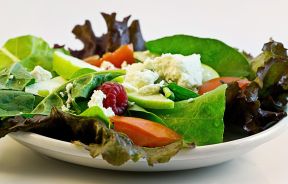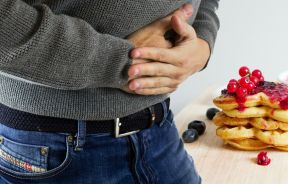Obese Shoppers Choose Healthy Foods With Help Of Subtle Cues, Decrease Spending On Junk Food

A trip to the grocery store while you are on a diet could turn into a health obstacle course that you have to overcome. As you determinedly make your way to the produce aisle, you pass by the cookie aisle and have an impulse to stroll through to see if they have updated your favorite line of cookies. While it seems like a harmless stroll through the sweets aisle, it can be detrimental to your body’s health. According to the Boston Medical Center, approximately 45 million Americans diet each year and spend $33 billion annually on weight loss products, but nearly two-thirds of Americans in the United States are overweight or obese.
Dieters who want to lose the pounds may have a difficult time following a healthy eating regime, especially when they are bombarded by junk food ads that promote unhealthy but tasty foods. Primes at grocery stores may help shoppers choose healthy food choices and reduce their spending on junk food. Obese shoppers who are given a recipe flyer with a few health-related words spend less than one-third the amount on unhealthy snacks as those given the same flyer without health-related wording, according to a recent study.
Findings published in the International Journal of Obesity revealed that subtle cues can aid obese shoppers in opting for healthy foods while curbing their appetite for junk food and decreasing their spending. Dutch researchers handed recipe flyers to 99 shoppers — 42 overweight and obese, and 57 normal-weight people — on their way into a grocery store. The team of researchers designed two versions of a recipe flyer. One flyer had words such as “healthy” and “good for your figure” and noted how many calories that a certain dish contained. The other recipe flyer contained non-health-related words such as “try it out” and “new recipe.”
Overweight participants who received the health-related flyer spent an estimated $1.40 on junk food including cookies, candy, and chips, while those who received the other flyer spent an estimated $4.80. For normal-weight participants, no difference was reported in the amount of money spent on snacks, Reuters Health reports.
Thirty study participants reported to not have paid attention to the flyer; therefore, the researchers did not find an association between the flyer that the participants received and how much money they spent on snacks. However, the overweight participants who paid some attention to the health-related flyer were found to reduce their snack spending regardless of whether they reported thinking about it as they shopped.
"Subtle cues can have a strong impact on our behavior, without us noticing. Fortunately, this is true not only for tempting food that surrounds us and makes self-control difficult - it also works for subtle cues that remind us of our health and dieting goals," said Esther K. Papies, of Utrecht University in the Netherlands, to Reuters Health.
These subtle cues, or messages, are not meant to be condescending or to make shoppers feel like they are being told what to do. They are meant to recommend healthy food alternatives that can overall improve their body.
Papies believes that there should be less cues centered on junk food and more health-positive posters throughout food markets. While this health initiative is being explored, she recommends shoppers to put these cues on their grocery lists as a means to reinforce healthy food ideals.
Currently, obesity is a health epidemic that affects more than one-third of U.S. adults, according to the Centers For Disease Control and Prevention.



























